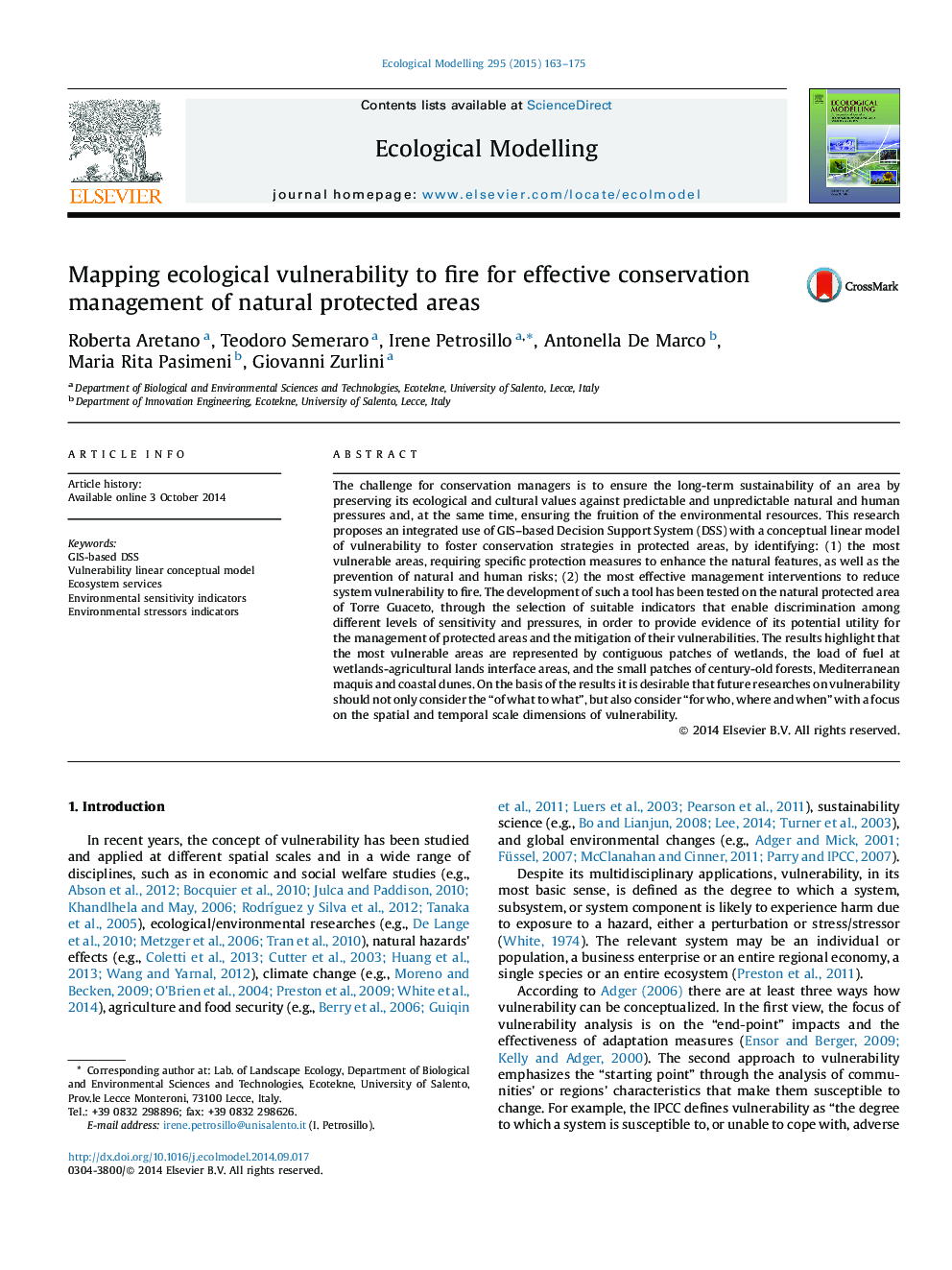| Article ID | Journal | Published Year | Pages | File Type |
|---|---|---|---|---|
| 4375873 | Ecological Modelling | 2015 | 13 Pages |
•We develop a GIS-based DSS conceptual model of vulnerability for protected areas.•Sensitivity, pressures and vulnerability can change across time and space.•Vulnerability interests wetlands, century-old forest, Mediterranean maquis and dunes.•Vulnerability hot-spots can help conservation managers to predict potential impacts.•Limitations and possible integration of the conceptual model are discussed.
The challenge for conservation managers is to ensure the long-term sustainability of an area by preserving its ecological and cultural values against predictable and unpredictable natural and human pressures and, at the same time, ensuring the fruition of the environmental resources. This research proposes an integrated use of GIS–based Decision Support System (DSS) with a conceptual linear model of vulnerability to foster conservation strategies in protected areas, by identifying: (1) the most vulnerable areas, requiring specific protection measures to enhance the natural features, as well as the prevention of natural and human risks; (2) the most effective management interventions to reduce system vulnerability to fire. The development of such a tool has been tested on the natural protected area of Torre Guaceto, through the selection of suitable indicators that enable discrimination among different levels of sensitivity and pressures, in order to provide evidence of its potential utility for the management of protected areas and the mitigation of their vulnerabilities. The results highlight that the most vulnerable areas are represented by contiguous patches of wetlands, the load of fuel at wetlands-agricultural lands interface areas, and the small patches of century-old forests, Mediterranean maquis and coastal dunes. On the basis of the results it is desirable that future researches on vulnerability should not only consider the “of what to what”, but also consider “for who, where and when” with a focus on the spatial and temporal scale dimensions of vulnerability.
Graphical abstractFigure optionsDownload full-size imageDownload as PowerPoint slide
